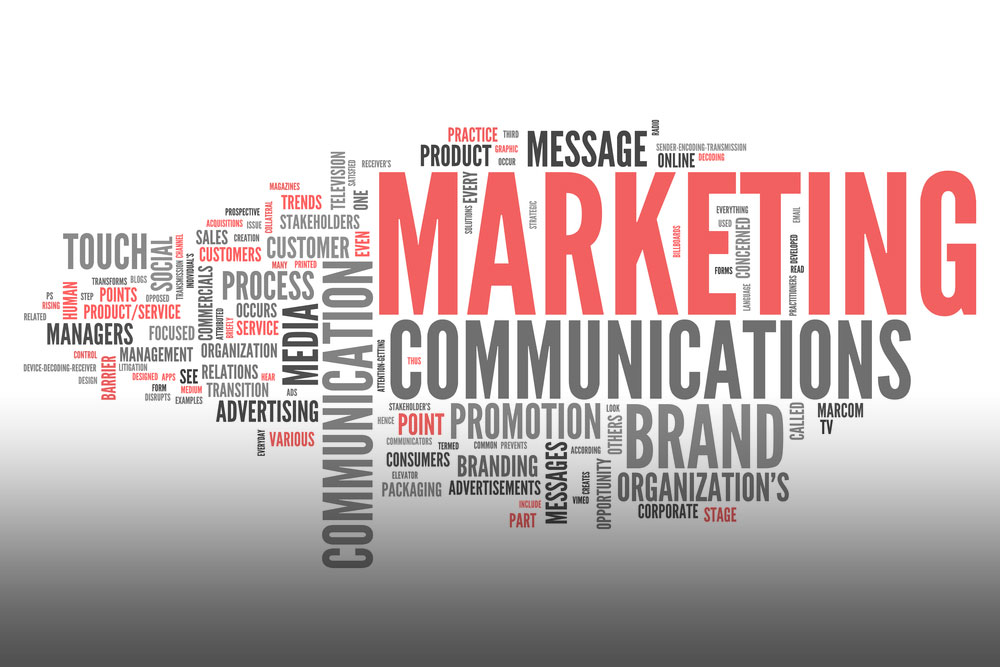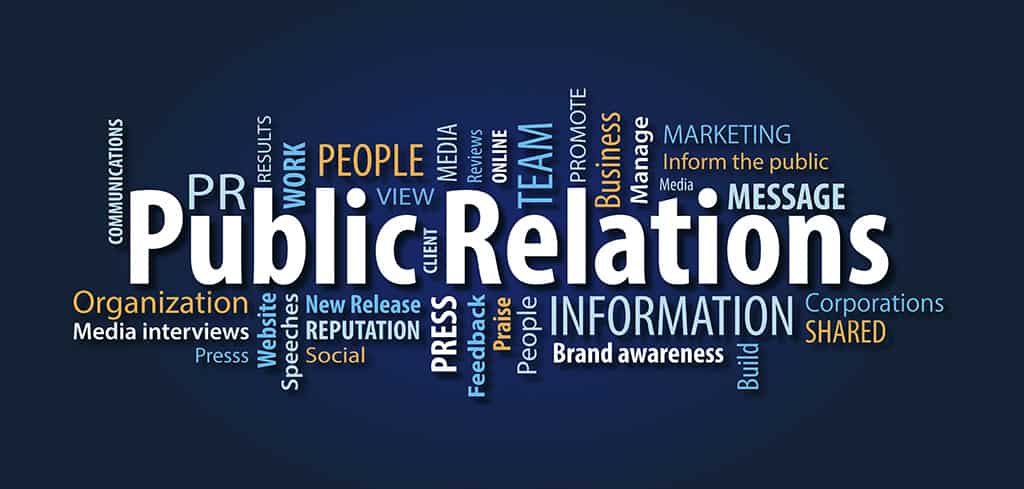Marketing communications: Definition, Goals, Types, and More
Effective communication is vital to many aspects of your life because no matter what line of work you pursue, you need to be able to share information with other people. To thrive in this world, you need to express them clearly and persuasively.
In the field of marketing, communication plays a crucial role. In today’s digital environment, the importance of communication is even more evident. That’s why you should have a good understanding of the term marketing communications. In this article, we will discuss Marketing communications: Definition, Goals, Types, and More.
Related Posts:
- Integrated Marketing Communication
- Growth Marketing: Definition, Best Practices, and Examples
- What is Social Media Marketing?
What is marketing communications?

Marketing communication (MarCom, MC, Marcom(s)) is a fundamental and complicated part of marketing efforts within a company. MarCom can be broadly defined as all the messages and media that you develop to communicate with the audience. Marketing communication involves advertising, direct marketing, personal selling, branding, packaging, online presence, printed materials, PR activities, sales presentations, sponsorships, trade show appearances, promotion to public relations, social media, etc.
Marketing communications employ various marketing platforms and methods together: Marketing communication channels concentrate on any means that a company conveys a message to its target audience or the overall market.
MC is composed of a marketing mix consisting of 4P’s: Price, Promotion, Place, and Product, for a company selling products, and consisting of 7P’s: Price, Promotion, Place, Product, People, Physical Evidence, and Process, for a service business.
Marketing communications goals

Marketing communication objectives are long-term goals where marketing strategies aim to boost the brand’s value over time. Unlike sales promotions, which are short-term purchasing incentives, communication goals are accomplished when you assure customers by consistently validating that your brand has the advantages they are looking for.
1. Increase Awareness

Increased brand awareness is one of the most popular marketing communication objectives and priorities for a new business. When you first enter the market, you need to make people know the existence of your business and products or services. To do this, you need to broadcast commercials or print ads that represent your business’s image and continuous repetition of your brand name, slogans, and jingles.
The entire goal is to become widely acknowledged and memorable. Established businesses typically use a closely-related goal of creating or sustaining top-of-mind awareness; in other words, customers remember you first when thinking of your product category.
2. Change Attitudes

Changing views of a product or brand is another important goal of communication. Occasionally, mistaken beliefs about your business, goods, or services are spread on the market. Advertising is a way of directly tackling them.
In other circumstances, negative publicity occurs because of the involvement of your business in a business scandal or unsettling activities. For example, BP spent millions of dollars on advertising to demonstrate to the public its clean-up attempts after its scandalous Gulf of Mexico oil spill in mid-2010. Local radio or print ads can help.
3. Influence Purchase Intent

Motivating customers to purchase is a crucial communication goal. It is typically achieved by compelling ads, which generally focus on the superior benefits to users compared to your competitors. Impressing your customers with the unspoken need, or prompting a customer to act, is vital.
4. Stimulate Trial Purchase

Two different but strongly linked communications goals are to boost the use of trials and drive repeat purchases. Free trials or product samples are popular ways of attracting consumers first to try out your product. In doing so, you can manage to take the risk off and get your brand to be experienced by the customer.
You should determine how to convert that into a follow-up purchase when you buy from you for the first time. You can do this by offering discounts on the next order or frequency programs. Thus, transforming one-time customers into repeat customers, and eventually, loyal customers will be a piece of cake.
5. Drive Brand Switching

Another goal closely linked to boosting the use of trials is to drive brand switching. It aims to get customers who purchase competing products to switch to your brand.
In similar ads designed to stimulate brand switching, tide detergent usually matches “other top brands.” The benefit of this approach is that consumers already shop within your category of products. It implies that the need is set. You have to convince them that your product or service is better and persuade them to try it out.
The importance of marketing communications
The primary goal of marketing communications is to increase sales volume through persuasive, informative, and positive messages. Marketing communication reveals new facts through stimulating product/service messages.
Marketing communications aim to inform and persuade target audiences and strengthen market credibility.
Common types of marketing communications
1. Personal Selling

Personal selling involves person-to-person communication between the salespersons and their potential customers. As opposed to advertising, it requires personal interactions between the source and the destination.
Advertising targets at group the shotgun approach, whereas personal selling targets individuals the correct approach. Salespersons are in charge of personalizing their messages based on each prospect’s distinct characteristics.
Furthermore, salespeople obtain immediate feedback on the extent to which their messages are being conveyed by observation and listening. If feedback shows that the message is not understood completely, the salesperson may adjust it quickly the way it is presented.
Personal selling can be a powerful promotional medium. During a TV commercial, consumers can easily leave the room, disregard a store display, or throw a circular e-mail in the trash can. It is harder to reject a sales employee as long as adequate funds are available in the company.
Perhaps the most powerful way of marketing is to have sales representatives call on every target customer. It would be incredibly inefficient for many companies, especially those that cater to the broad market. Thus, they use methods of mass marketing, like advertising. In industrial marketing, personal selling is indeed vital.
2. Sales Promotion

As per the American Marketing Association, sales promotion involves all marketing practices other than personal selling, advertisement, and publicity that promote consumer buying and dealer performance, like displays, shows and events, promotions, and other non-recurring selling efforts not in the routine.
Sales promotion activities are impersonal and typically non-recurring and target the ultimate consumers, industrial consumers, and go-betweens. These activities are inclined to enhance the attempts of advertising and personal selling.
Free product samples, trading stamps, store displays, premiums, coupons, and trade shows are examples of sell promotion. Store displays are an useful sales promotion tool for marketers of many companies, such as food, toys, and clothing.
Displays show customers promotion messages at the time and place of purchase. This exposure is particularly relevant for impulse-bought products. Various consumer goods are bought in supermarkets using means of self-service selling. Marketers of these products require effective displays to differentiate their products from their competitors.
3. Publicity

Publicity is a way of promoting the mass market, which is similar to advertising, except that it is free. It is found in the news media’s editorial section, and it is about newsworthy events. News releases or press releases, photos, and feature stories are the most common form of publicity.
The control of marketers over the publicity’s nature that their companies and products get is less than that of their advertising, personal selling, and sales promotion messages.
For example, after receiving a news release, the editor or program director for the broadcast station may choose to throw the release into the waste paper bin, modify the wording, or print or broadcast it in the original form.
The nature of the news release is completely in the media’s control, and the marketer can not control it. Publicity can be both negative and positive. Some products – and brands got poor publicity; for example, cigarettes, wines, artificial sweeteners were labeled dangerous or harmful in the publicity they would have preferred to do without.
Most company and trade association official endeavors to establish favorable working relationships with the media to alleviate bad publicity. They know that such communications to the public may hurt the company’s reputation.
4. Public Relations

To create a positive picture of their companies and products to the public’s eyes, advertisers participate in public relations. They guide the activity to parties except for target customers. Such parties are the general public, labor unions, the press, and environmental groups.
Activities in public relations involve sponsoring, lobbying, and using promotion messages to convince members of the public to take up the desired position. The term public relations means the communications and relationships a company has with the different parts of the public. Such sections contain the customers of the company, the suppliers, the shareholders, the staff, the government, the general public, and the society in which it works.
PR programs may be either formal or informal. The crucial point is that any company should be careful with its public relations, regardless of how formalized or structured the program is.
Tools for marketing communications
After we discuss the basic communication mechanism, we can grasp the principle of marketing communication. Marketing is the process that provides customers with the goods and services that fulfill their needs and desires.
Modern marketing handles the 4 Ps: product, promotion, price, and place, or distribution channel. In a broad sense, the entire marketing process has a broad amount of communication content.
For example, the product communicates youthfulness of reputation, speed, care, etc. The brand name communicates thecharacteristics of the product. The package communicates convenience and aesthetics. The price communicates product quality. The communication between marketer and distributor. Thus each aspect of the marketing mix either stimulates or weakens the process of communication.
Such elements have a strong impact on the selling process. Therefore marketing communication is a broader concept. Nevertheless, marketing communication is the promotional or strategy in a narrow sense.
It is planned promotional communication with a combination of five main tools.
Firstly, it is advertising, which is about any paid form of non-personal communication of products, services, and ideas by a recognized sponsor.
Secondly, sales promotion, or any short-term direct inducements to the consumers, salespeople distributors to drive product and service sales.
The third one- publicity where marketers bring commercially significant news onto the media, which does not involve direct payment. For personal selling, it is the sales force driven to keep in contact with customers, connect with them, make sales presentations, and close the deal. Another one is public relations, which portray the company’s positive image in public.
After the Industrial Revolution, advertising has developed as a tool for marketing communication. It conveys a successful marketer message to a group of people. Unlike salesmanship, which interacts face-to-face with the customer, the marketer pays for sponsoring the advertising activity. Advertising is non-personal. It’s targeted at a mass market, not at a customer like in personal selling.
Advertising is a communication tool, although advertisers use advertising to promote goods and services. The advertiser is the source that conveys the message. The message is transmitted through a suitable medium like the press, TV, or the Net. The message is decoded by the target audience, which gets the message.
Advertising generally seeks to make the target market positively oriented towards the product or service. Advertising, in this sense, is a marketing communication. The so-called mass communication is because it is received by a vast number of people thru the mass media.
Advertising is meant to attract attention to a product. It seeks to build awareness about the advertised product’s existence. It spreads on product information in a way that interest is generated in the mind if the potential customer has been into the product. The audience will grow fond of the product and yearn to own it. In addition, the persuasive arguments in favor of the product can also result in the customer’s purchasing action.
See more: 13 types of advertising
The process of marketing communications
Communication means that the sender transfers the information on to the receiver. Yet in reality, this process is complicated and includes several other considerations. Yet Kotler has provided one of the most powerful models to describe the process of marketing communication (see diagram below).

The diagram illustrates differents elements, the first two are sender and receiver. The second two are message and media. This model also includes other features that are encoding, decoding, response, and feedback. Another element is noise, which is random. Also, other competing messages typically interfere with the communication process.
To understand the process better, you can think of it like when first of all, the sender begins with an idea to share, and the sender encodes that idea’s meaning as a message. The sender creates the message in a transmittable medium, then the sender transmits the message via a channel. The message is received by the audience, who then decodes it to extract its meaning. After that, the audience responds to the message and gives feedback to the sender.
This model underlines the key factors which play a vital role in effective communication. Identifying the market response and your target audience is crucial before you send any message.
Related posts:
- Why Is Starbucks So Popular?
- The Zara’s 0$ Advertising Strategy
- Audi Marketing Strategy
- Harley Davidson’s Marketing Strategy
- Converse’s Marketing Strategy
Final thoughts
To sum up, marketing communications are vital in any organization’s marketing efforts. To communicate more effectively with your audience, you should understand different types of marketing communications and the process.
As nowadays, the nature of communication is changing, you should watch out for new movements, get latest updates, and stay ahead of the competition. It proceeds to get swayed by waves of innovation, first digital media, then social media, now mobile communication, and the upcoming invasion of chatbots.
For example, the wave of social media has transformed the marketing activities in recent years. To succeed, you should not underestimate selling a product through ads on social networking sites or social media sites such as Facebook, Twitter, Google+, Instagram, and Pinterest. We recommend you read this post: What is Social Media Marketing? Why Social Media Marketing is a Must For Business.
If you have any questions, do not hesitate to leave a comment in the box below. We are glad to help you out. If you find this post useful, you can share this with your friends.
New Posts






